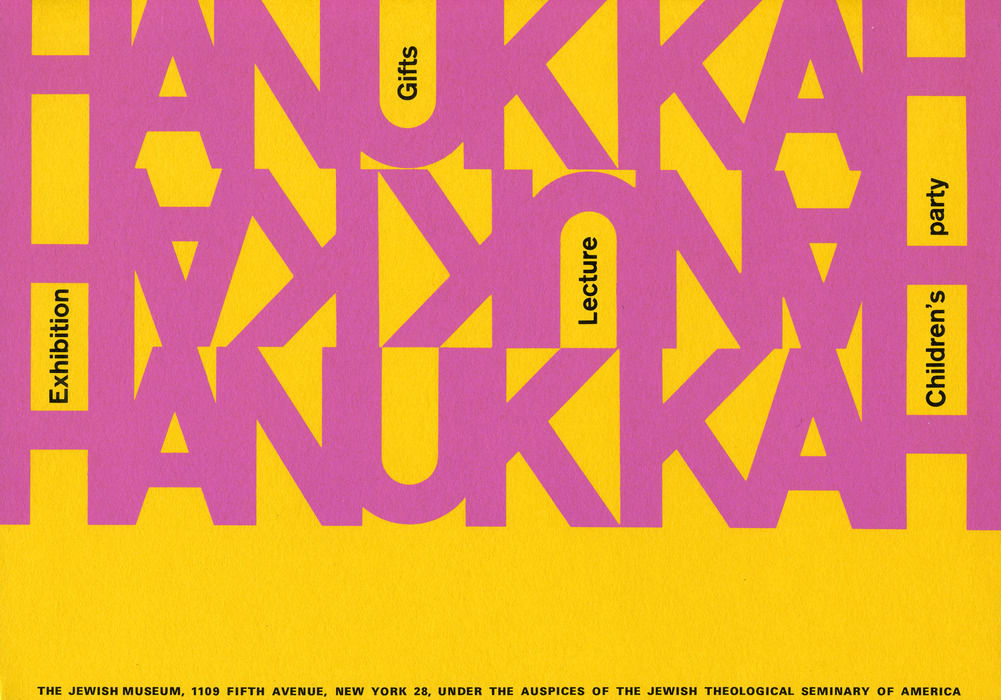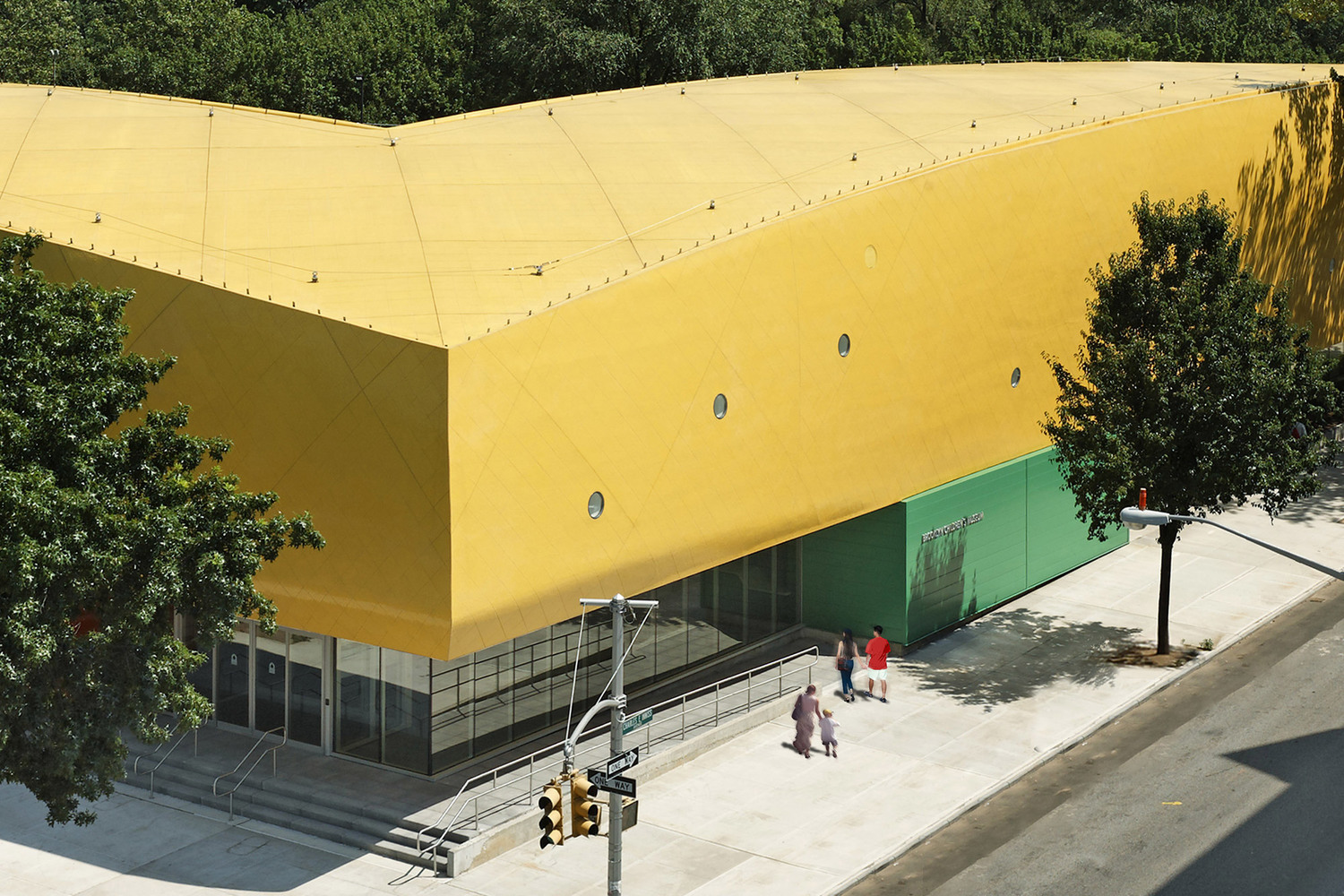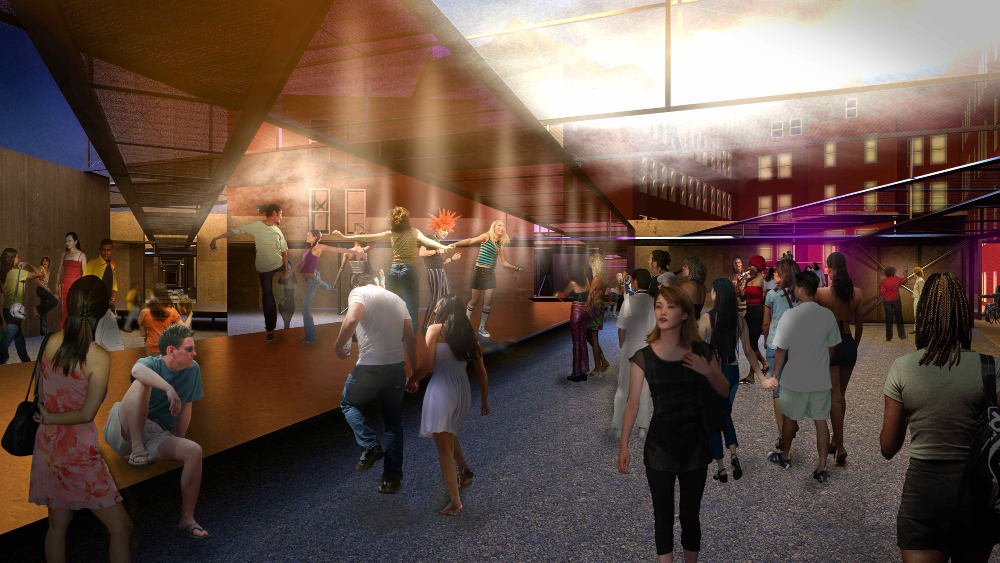A charming exhibition at the Jewish Museum in New York presents the religious and secular work of Peter Shire, an original member of the 1980s Milan-based Memphis design group, with other vintage Memphis pieces by its founder, Ettore Sottsass, and fellow member Michele de Lucci.
The centerpiece of the exhibition—which is called “Memphis Does Hanukkah” and runs through February 12—is a menorah or lamp Shire created independently in 1988 for the Jewish holiday of Hanukkah. Exhibition curator Kelly Taxter called the Los Angeles–based Shire, who was born in 1947 and is still active, a “specialist in oddly designed yet always functional teapots.” She added that a magazine article about his teapot designs was in fact what brought Sottsass and him together.
Shire’s 1988 menorah, made of industrial materials including painted steel, anodized aluminum, and chromium, has what Taxter described as “finish-fetish” detailing, which she said recalls Los Angeles’ Pop, car, and surf cultures, and also “speaks to [Shire’s] knowledge of collective movements such as Russian Constructivism and the Bauhaus, in which artists and designers brought together the methods and aesthetics of industrial manufacturing with the vision and individuality of fine art.” Taxter further believes Shire’s work “reflects the radical, irreverent, and often humorous history and style of West Coast art. Known for a confluence of the natural, artificial, commercial and spiritual, Los Angeles is a place where light and space are as central as neon, billboards, and plastic.”
Memphis objects on display here include Sottsass’s 1982 silver Murmansk fruit dish, described as an “alien, vaguely mechanical shape that looks as though it might suddenly spring into motion”; a 1979 laminate design also by Sottsass called Bactaerio; and Oceanic, a 1981 lacquered metal lamp by de Lucchi inspired by old ocean liners. There is also the invitation to the first Memphis exhibition in Milan in 1981, and a photograph from the same year of fashion designer Karl Lagerfeld at home in his Monaco apartment, outfitted entirely in Memphis pieces.
Taxter features other, equally playful menorahs here, including a cast copper alloy one made in the 1930s-1940s that is composed of teardrop-shaped candleholders and rods, nuts, bolts, and screws, all influenced by car and airplane design. Other menorahs include the 2004 Menorahmorph, made of silicone and stainless steel, by Sottsass student Karim Rashid, and Larry Kagan’s 1980 Menora 2, made of steel diamond plate and steel tubing, the former used on doors that cover stairs to New York City shop and restaurant basements. Taxter said this material “represented [to Kagan] an urban vernacular redolent of the grit and grime of Soho, then a scruffy neighborhood where he and other artists congregated.”
This exhibition, which also features one of Shire’s early teapots, the 1983 Anchorage, made of silver, wood, and enamel, provides visually playful food for thought not only about religious objects and their many iterations, but also about the legacy of Memphis, which began falling out of favor at the turn of this century. Taxter, for one, believes Memphis is having somewhat of a comeback, displaying a dress made of fabric by Memphis member Nathalie Du Pasquier, who in 2014 was commissioned by American Apparel to create a series of Memphis-inspired prints for men’s and women’s garments.










